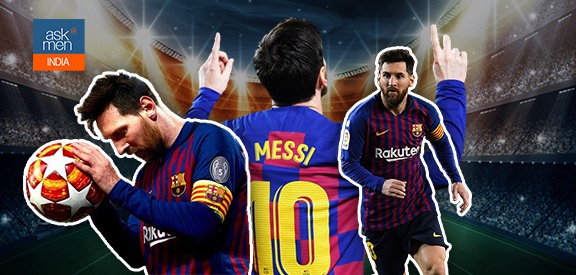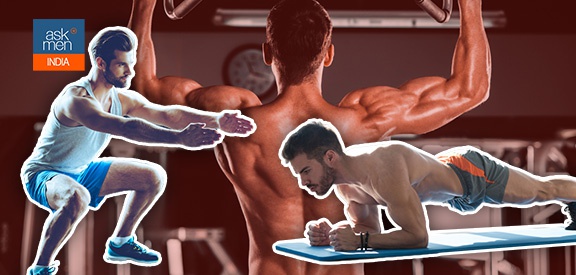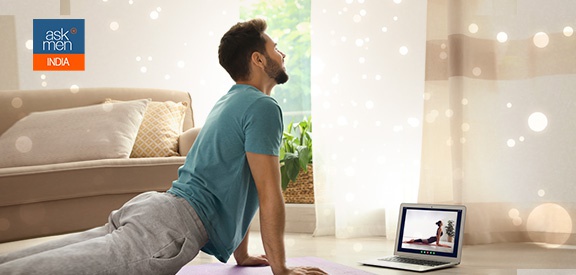Core strength has become a buzz word in the fitness industry. Its importance is emphasized in all forms of workout, be it yoga or martial arts, cardio or weight lifting. Fitness trainers constantly tell you to engage your core muscles while exercising, as without that, you won’t reap the benefits of your efforts. So to say, anyone who’s even slightly interested in fitness would have encountered the term ‘core strength’ multiple times.
This made us curious as to how many people really understand what comprises the core muscles and how to train them correctly. There are too many misconceptions surrounding this muscle group and unless and until they’re cleared out, it’s impossible to optimize the results. To help you understand the core muscles, AskMen India lists down six things you probably didn’t know about them:
There is more to your core than your abs
Most people, at the mention of core muscles, think about their abdominals by default. Although the abdominals make up a huge part of your core, there is more to this muscle group than just that. The core also comprises the muscles in your back, chest, obliques and pelvic floor.
Basically all those muscles that surround, support and stabilize the spinal cord. There are major core muscles, such as the transversus abdominis, rectus abdominis and multifidus; and then there are minor core muscles, such as the latissimus dorsi, gluteus maximus and trapezius. It’s important to train all of them to have a strong core overall.
Targeted exercises are not enough to train your core
A lot of people have the misconception that core training is all about doing exercises like sit-ups, oblique twists, planks and leg raises, which target the abdominal muscles. Strengthening the core is thought to be the same thing as reducing belly fat and achieving shredded abs. This is not true at all.
You can never spot-reduce fat. Strength training gets the body to burn fat from whichever part it is stored in. Even lower body exercises like lunges and squats can help you slim down. If you want a strong core, which is another ball game altogether, just remember to engage your core muscles and practise conscious breathing through any exercise that you’re doing.
Core training becomes more important as you grow older
Once you cross your twenties, the muscles in your body start degenerating if they’re not stretched and strengthened regularly. This happens at a slow rate initially, and then all of a sudden, very quickly. Core training is thought to be an extremely strenuous form of exercise which only young people can do.
While we weren’t denying that it’s strenuous, there’s absolutely no reason to avoid it as you grow older. In fact, core training becomes critically important as you age, given that it helps keep your bone and muscle strength intact. It prevents injuries caused due to slouching and falling, which are more common among the elderly. It stabilizes the spinal cord and enables movement in your entire body.
Six-pack abs are not a sign of a strong core
There is a perception among people that those who have six-pack abs are super strong, but here’s the deal: training at the gym and doing targeted exercises is not a holistic way to get fit. That’s why there are so many men who, despite lifting weights every day, find themselves panting when told to run a distance as little as 100 metres.
This happens because they’ve managed to bulk up their biceps by repeatedly performing dumbbell curls, but that hasn’t improved their cardiovascular capacity even one bit. Similarly, doing crunches and planks may tone your torso, but not necessarily toughen it. How your body looks on the outside has nothing to do with how strong it is from the inside. That’s why you see slightly overweight people having amazing strength and those who are slim and trim feeling weak.
You should decrease your set and rep count as your core strengthens
The core muscles are like any other muscle group in your body. The only difference is that they support and stabilize your spinal cord and enable all the other muscle groups in your body to move. This is why it is important to strengthen your core first and then go on to working on other parts.
Apart from this, the way you train your core muscles should be the same as any other muscle group: Start off small and intensify your workout once you see progress. Most people begin with a set and rep ratio of 3:10, which is fine. However, as your core becomes stronger, you should bring down the set and rep count and instead, try out tougher variations or increase the weights.
The core muscles help you maintain good posture
The primary job of the core muscles is to support and stabilize the spinal cord, which is the medium of communication between the brain and the body and enables every function from movement to memory.
Besides, the spinal cord has another role to play in the human body, which makes the training of core muscles all the more important: It gives you a good posture, which in turn, stops stiffness from accumulating in your back and improves cognitive abilities like intuition, concentration and clarity of thought. It prevents illnesses like scoliosis, in which the shape of the spine curves and causes pain across the body.
Keep these facts in mind the next time you train your core muscles!
Cover artwork by Dhaval Punatar/AskMen India
You May Also Dig:
Source link: https://in.askmen.com/fitness-workouts/1128224/article/6-things-you-probably-dont-know-about-your-core-muscles by Ritu Ailani at in.askmen.com






